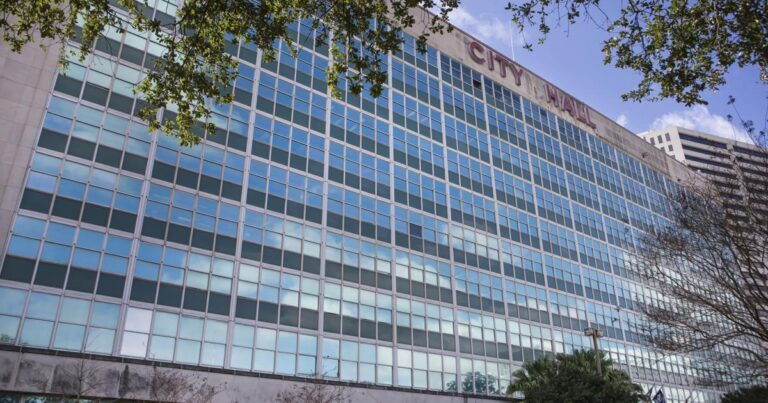A time traveler from two decades back might look at the names on the fall New Orleans ballot and feel like not much has changed.
There’s a Morrell and a Willard — incumbent JP and state Rep. Matthew — running for the two at-large City Council seats; they’re the son and nephew, respectively, of the two Cynthias who represented the council districts hit hardest by Hurricane Katrina. Oliver Thomas is there too, running for mayor long after he was an at-large member and the likely successor to Ray Nagin.
A lot changed for Thomas in the interim — a guilty plea in a bribery case and short stint in prison, followed by a comeback as a radio host and then on the council — and now, finally, a mayor’s race in which he’s no longer the clear front-runner.
Familiar names notwithstanding, a lot’s changed in how the city elects all its politicians.
Twenty years ago, New Orleans had never had a woman mayor or one who was not a native, and it was widely thought that the days of electing a non-Black mayor to lead the majority African-American city were over. Then came Mitch Landrieu and LaToya Cantrell and all bets were off, which is good news for City Councilmember at-large Helena Moreno, who has led mayoral polls so far and fits all three categories. Rounding out the top tier are former Judge Arthur Hunter and a late entry, state Sen. Royce Duplessis.
Columnist Stephanie Grace
That openness on the part of city’s electorate is one indication of an altered landscape.
Another is the death of a model around which city politics was organized. That’s most apparent in District B, where there won’t be an election on Oct. 11 at all because nobody signed up to challenge incumbent Lesli Harris.
This speaks well of how Harris has performed in her first term, but it also highlights something else: That the BOLD organization, which used to dominate politics in the Central City core of District B, didn’t field a candidate, four years after Harris unseated BOLD stalwart Jay Banks.
Back in the day, BOLD launched major candidates such as Jim Singleton, Cantrell and Thomas. And other groups that were part of the city’s “Alphabet Soup” of post-civil rights organizations did the same: The Morial family’s LIFE, former U.S. Rep. Bill Jefferson’s Progressive Democrats, COUP and SOUL and more.
But Thomas has moved to District E in New Orleans East and built a new political brand, and the daughter of one of BOLD’s early leaders Ken Carter, mayoral candidate Eileen Carter, is more a gadfly known for leading the failed effort to recall Cantrell than a contender. The other groups are that once duked it out are either dormant or shrunken in stature and relevance.
Katrina fueled some of the change by scrambleding the residential patterns that made neighborhood-based organizations strong. A crackdown on public corruption played a part too, snaring political leaders including Thomas, Nagin and Jefferson. Modernity contributed as well, with political activity moving to television and now social media and away from the streets. These days it’s hard to find a successful younger politician, even one from a storied family, who does things the old way.
See how much cash candidates for New Orleans mayor, sheriff, council have raised
What’s replaced it is something more free form, shifting alliances among politicians and more independence among voters.
There are still groups to watch.
Labor, criminal justice and women’s organizations can offer meaningful support.
Individual office holders still get involved in other campaigns; U.S. Rep. Troy Carter is helping several fellow Algiers pols run citywide, including state Rep. Delisha Boyd against Willard for council-at-large and Constable Edwin Shorty for sheriff against deeply damaged incumbent Susan Hutson and Michelle Woodfork, the former interim police superintendent. District Attorney Jason Williams has raised money for Moreno, Woodfork and several council candidates.
Conservatives, a minority in the city, are a swing vote for mayor, and have in recent years gone not with someone who shares their political views — none of the major candidates, all Democrats, do — but the person they think is most willing to work with them. That’s a potential opening for someone like Hunter or Duplessis.
There’s also the barely under-radar question of how many voters will choose a candidate based on race.
And, of course, there are matters of substance and background.
In the mayor’s race, everyone’s talking about making the city work better, which could lead voters to look for leadership on the council, which has often tangled with Cantrell. Or they may decide everyone in city government is part of the problem and gravitate toward a relative outsider like Hunter or a comparatively new face such as Duplessis. Or they may remember that the last time they took a chance on someone they didn’t know well they got Nagin, who ended his tenure about as unpopular as Cantrell is.
If one thing’s for sure, it’s that change is very much in the air this campaign season. Just which version of change voters will choose, at this early point, is anybody’s guess.

